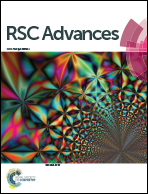Temperature and concentration dependent fibrillogenesis for improved magnetic alignment of collagen gels
Abstract
Collagen fibrils form the structural basis for a broad range of complex biological tissues and materials. Collagen serves as an ideal natural polymer, formed as gels or matrices, for engineering solutions aimed at the regeneration of tissues following damage or disease. Recapitulation of native tissue hierarchical structure involves the careful consideration of the fibril-microstructure of the target tissue extracellular matrix and the choice of fibrillogenesis conditions that favor spatially-dependent fibril alignment. While magnetic fields non-destructively influence collagen fibrillogenesis and alignment, previous methods have demonstrated only limited control, especially when preparing large volume tissue constructs suitable for implantation. In this study, we investigate the use of temperature-controlled fibrillogenesis over a range of applicable collagen concentrations for improved magnetic alignment of polymerizable collagen-fibril gels. Magnetically aligned collagen gels show that bulk and microscale fibril alignment depend on both polymerization temperature and collagen concentration. The degree of fibril alignment at the microscale increased with decreasing polymerization temperature and collagen concentration. Further, computational simulations suggest that lower polymerization temperatures affect the internal gel temperature distribution and convective fluid velocity, potentially facilitating greater fibril alignment. This work demonstrates improvements in observed fibril anisotropy compared to previous work using similar magnetic field strengths, suggesting that temperature and collagen concentration may be utilized to achieve desired fibril alignment and structural properties. Improved control of collagen-based gel structure may better emulate native tissue structural (alignment) and physical properties, with enhanced potential for repair success in vivo.


 Please wait while we load your content...
Please wait while we load your content...